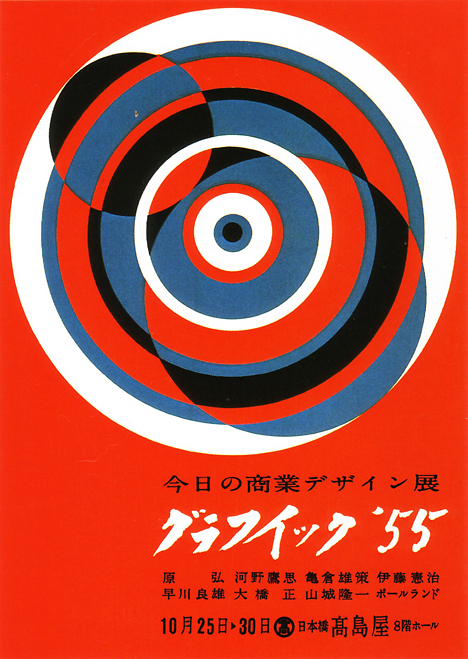 |
| Astro-Boy by Osamu Tezuka |
Increased labor allowed Japan to produce more goods to export to countries like the U.S. and graphic design was needed more than ever. Emerging as one of the world's major industrial powers, Japanese companies like Toyota and Mitsubishi hired professional designers to completely change its branding and image. Aside from industrial products, everything being produced from the country including traditional crafts and food depended on design as more people payed attention to it during the 50s due to materialism. While American and European graphic design was largely influenced by the International Typographic Style during this time, Japan graphic design turned to Constructivism while still retaining traditional Japanese Art Theory. Delicate, flat lines and silhouettes, simplification, abstraction, flat colors, symmetrical composition, and decorative patterns from ukiyo-e were still being used Japan as designers blended tradition with new art forms outside of Japan.
 |
| Yusaku Kamekura, 1955. Poster for a photo exhibition. |
Overtime Japanese graphic designers changed their styles from traditional to futuristic. With a booming economy and a rising tech industry, there was a lot of speculation and endless possibilities of what else could happen for the country next. Designers couldn't wait any longer and drew their own visions of the future. Instead of flatness, dimension was explored and dynamic colors were used to communicate excitement and energy. Reading a little about this in the lecture immediately made me think about Astro-Boy, the popular manga and anime series from 1952. And this makes sense and further supports that design was reaching to all aspects of life, from the automobile industry to food packaging to cartoons. Design was crucial to bring Japan back into power and eventually helped maintained Japan's strong and steady economy. But most importantly, design helped the world forget about the atrocities committed by and done to Japan and allowed everyone to move on.
Sources:
Michio Hayashi, Tracing the Graphic in Postwar Japanese Art
https://history.state.gov/milestones/1945-1952/japan-reconstruction
http://www.foreignaffairs.com/articles/30974/donald-s-zagoria/how-japans-economy-grew-so-fast-the-sources-of-postwar-expansion
http://www.britannica.com/EBchecked/topic/1032864/graphic-design/242775/Postwar-graphic-design-in-Japan
http://pinktentacle.com/2010/03/yusaku-kamekura-posters/
http://www.iun.edu/~hisdcl/h207_2002/jecontakeoff.htm
0 comments:
Post a Comment